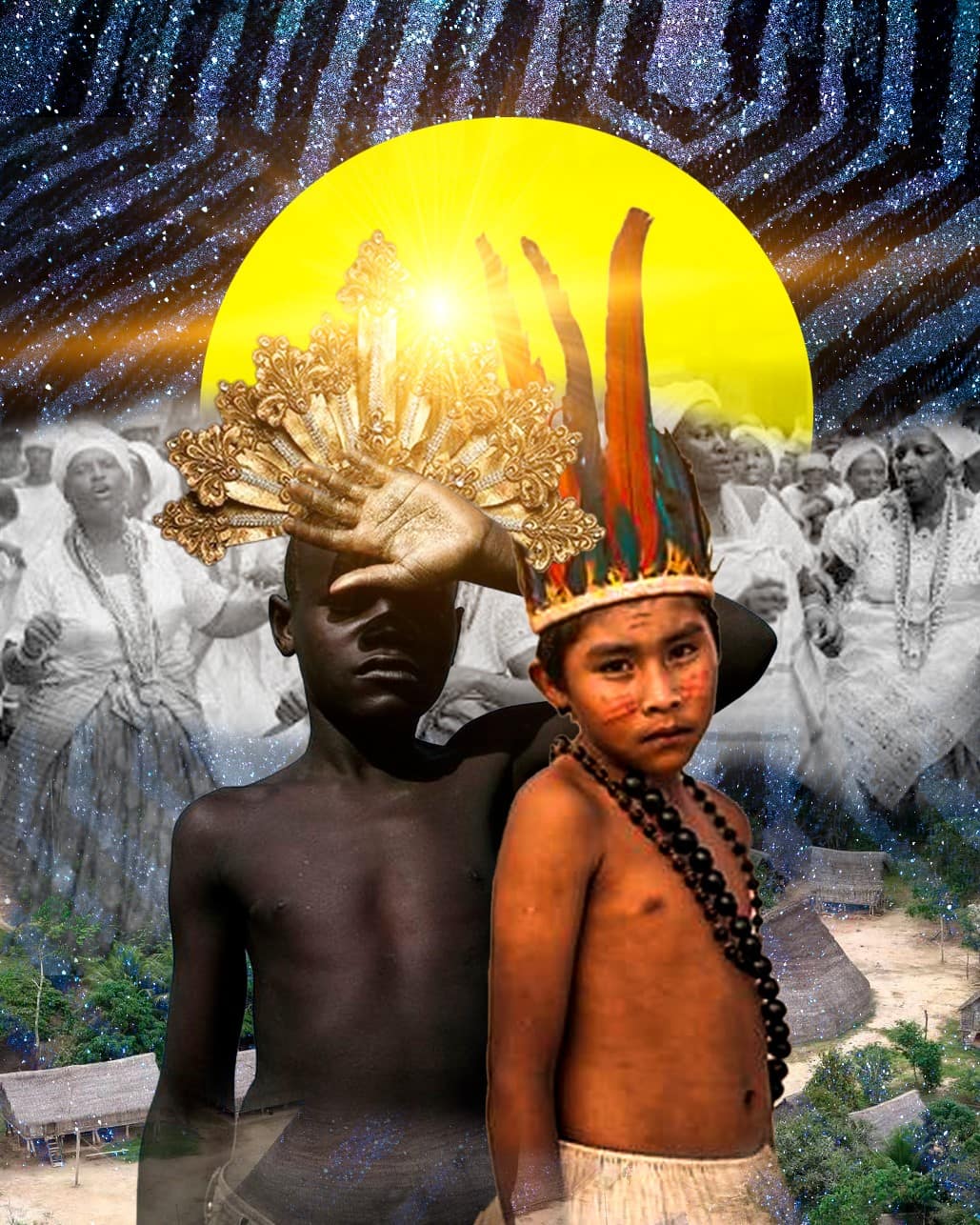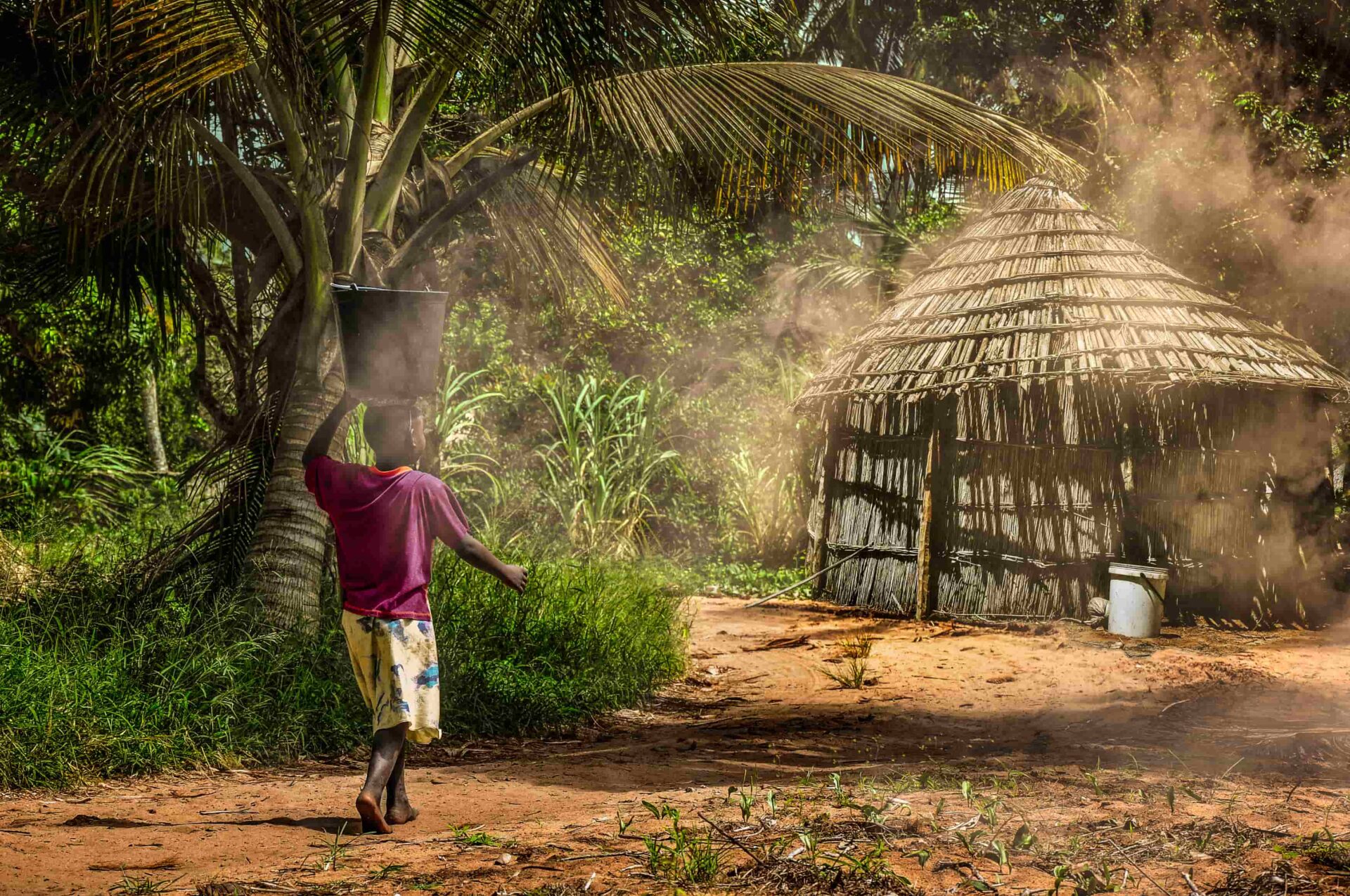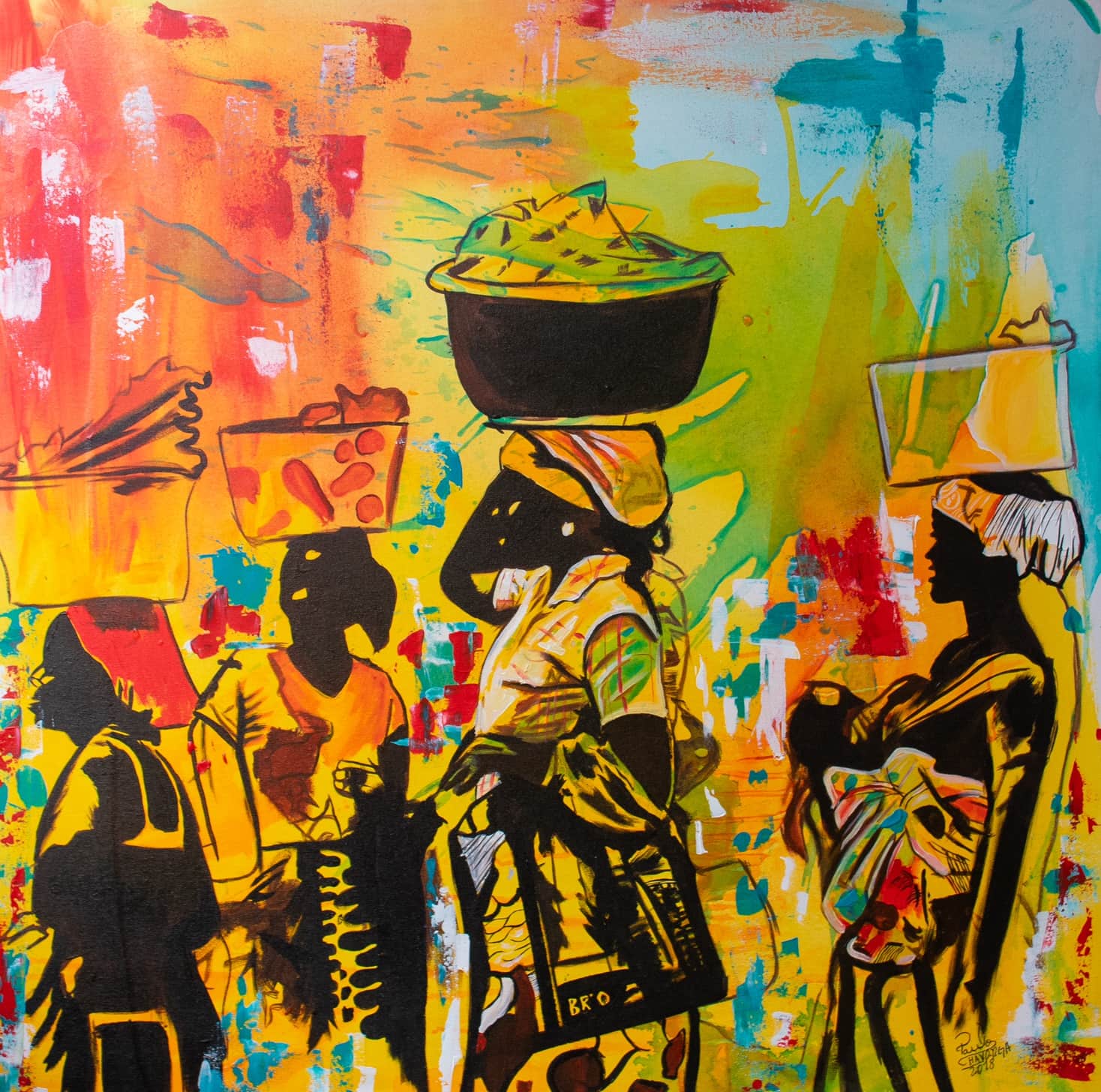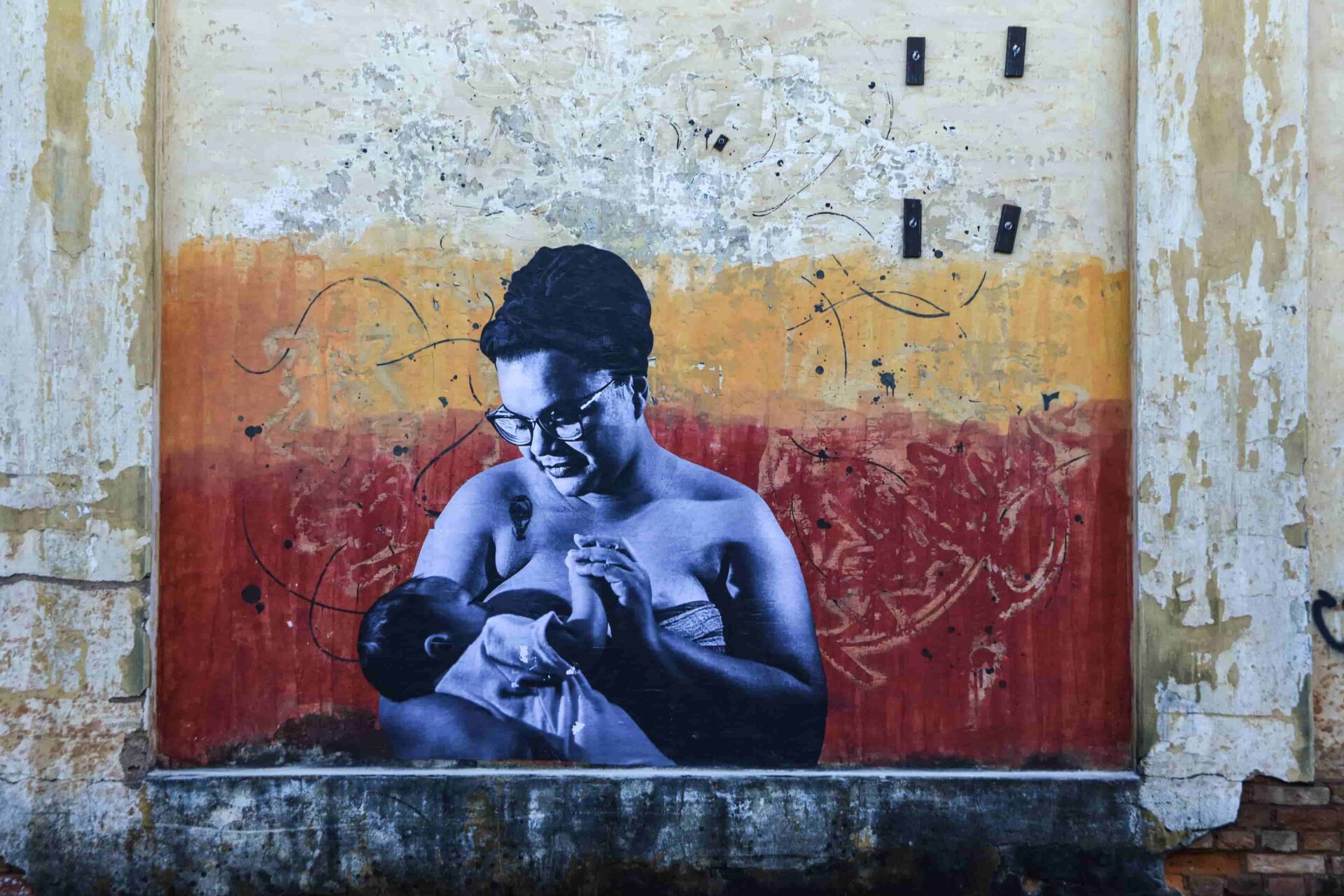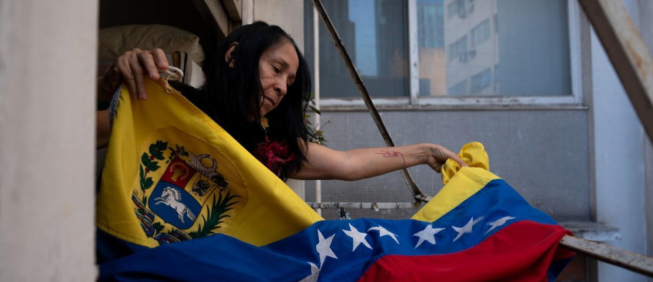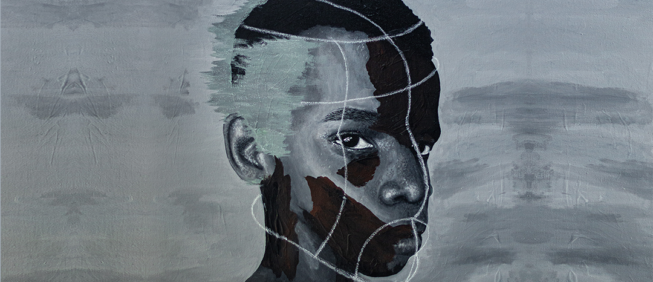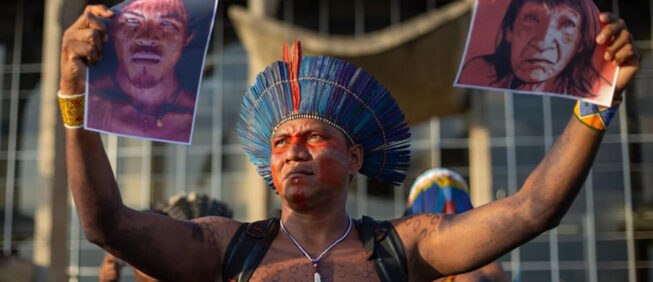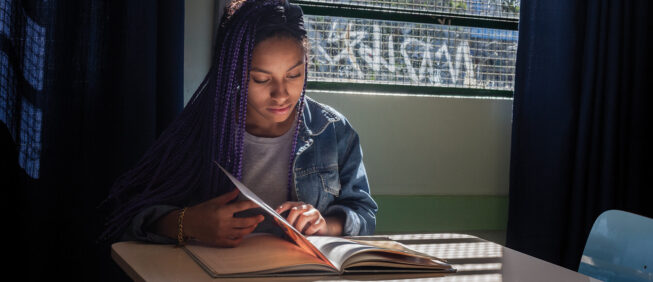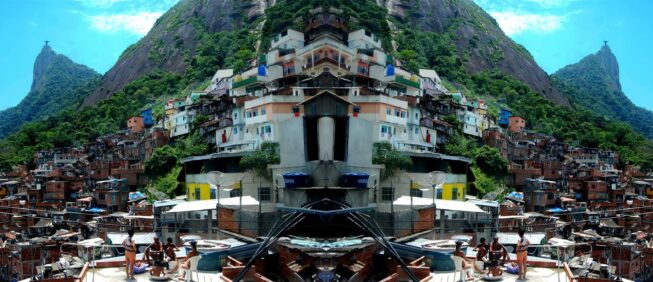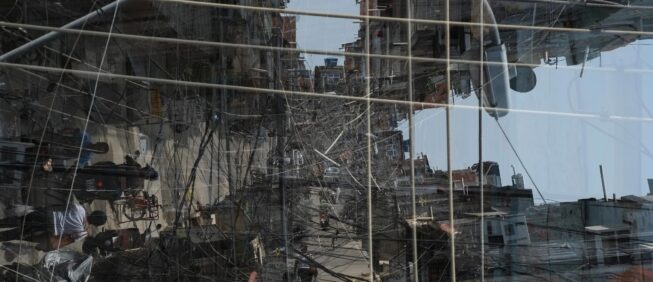Art from the Peripheries Depicts the African Diaspora in a Digital Environment
Transmitted free and online during the pandemic, the Origins #3 exhibit facilitates access to art and culture in uncertain times
Mariane Del Rei
| Brazil |
9 de April de 2021
translated by Edmung Ruge

Ayear since the pandemic’s onset, society has had to adjust to a new lifestyle. This is just as true of art and culture. According to a study by the Brazil chapter of the International Council of Museums (ICOM-BR), while museums’ increasing digital presence is nothing new, the trend took off during the pandemic, with online exhibits and/or virtual visits to museums and galleries among the most accessed activities. Among those art exhibits that were forced to move to virtual environments, the Origins #3 Exhibit, which took place for free on the Festival Cultural Pangeia website between December 2020 and February 2021, stands out as an example of success.
The exhibition had initially been designed to take place in its physical form at the Grajaú Cultural Center in São Paulo. Owing to the pandemic, it was moved to an online format, amplifying its reach and allowing it to receive broad public attention — not only in Brazil, but in other countries as well. The exhibit received international visitors from locations including the United States, Mexico, Angola, Mozambique, Ecuador, the Netherlands, Austria, and Italy.
The exhibition featured more than 50 works of art, including paintings, collages, digital works, and photography produced by the artists Isabela Alves (Afrobela) Cauã Bertoldo, Cassimano, Paulo Chavonga, and Ione Maria — plural artists that use their work to depict the diasporic origins involved in their day-to-day life, reflecting on the essences of the African diaspora in peripheral realities.
In an interview, curator Priscila Magalhaes spoke of the artists’ life experiences and how their origins in peripheral territories contributed to the construction of the art on display, as well as the exhibition itself.
“The curation behind the exhibition was linked to the vision of peripheral artists, one that is related to territory and ancestrality. As such, the works conceived for the exposition are representations of these two elements. They make clear, when we appreciate these works, all of the life experiences of these artists, with a basis in the places they live and the search for ancestrality related to the Afrodiasporic connection, given that all of them are Black,” said Magalhães.
Magalhães also spoke of the great challenge of bringing artistic presentation to the internet, of the need to detach from the in-person experience and to create a more attractive design for the online public.

“People are used to seeing works of art up close, seeing the texture, smelling the smell, seeing the size, having a sensorial experience. And this left us worried that an online experience would be incomplete. Of course, in general, a physical exhibition allows for more use of the senses, but we had to adapt and take this art to people in a different way. We had a promising audience size, indicating that people appreciated the art, in fact, even in a virtual environment,” emphasized Magalhães.
Site visitors took note of the new language contained in the exhibited work, which establishes a unique relationship with the art, depicting diasporic origins in a contemporary form. Magalhães explained what it was like for the artists to create their work.
“The process was different for each artist in the exhibit, with nuances and ethical and aesthetic specificities. Even so, it was possible to identify some similarities, close traces and motivations. Among the common elements, the Blackness of the persons depicted/photographed/experienced in the work; attention to the details in their paths as artists, as well as the people that crossed those paths; the duality of ‘good’ versus ‘bad,’ so present in the favelas; symbols and rereadings of histories of close and distant ancestors; and, finally, but no less important, the implicit dignity in the care for their work, of understanding the cyclical movement of their lives in relation to those of the ancients,” she said.
Magalhães also pointed out that artists of the peripheries have positioned themselves and challenged the hegemonic institutions of the art world.
“We believe that the greatest counter-hegemonic movement possible for marginal artists is to understand the individual process of each artist and, thus, strengthen independent initiatives. In the same way, the notion of community is very present for these artists, and connections and partnerships with different parameters of exchange are not uncommon. This creates self-sufficient production and artistic appreciation networks, allowing for the existence, not of one, but of various peripheral art circuits,” she concluded.
The Pangeia Cultural Festival is a reference to Pangea, the grand continent and original earthly crust that existed prior to the separation that created the six continents that we know today: Africa, Antarctica, Asia, Europe, Oceania, and the Americas. Despite continental divisions, its proposal is the union of cultures, influenced and constructed through artistic interventions with diverse attractions and the mapping of artists. The festival is part of the “Americas and Africa Connection,” project, related to the influence of Afrodiasporic culture in the Americas.

Cauã Bertoldo | Brazil |
Caua Bertoldo: A visual artist, Bertold has been developing the poetic identity of his work since 2014. He expresses himself in diverse painting techniques, including watercolor, digital art, graffiti, and others. His research deals with questions of the Black, queer subject through depictions filled with metaphors and multi-angled interpretations, in which each can be connected with and seen in its own way.

Cassimano | Brazil |
Cassimano: Born and raised in the periphery of São Paulo, Cassimano took an interest in street photography as an adolescent during his work as a messenger. In 2012, he traveled to Mozambique to take part in a cultural exchange and photograph the trip. Since 2016, he has produced the “Photographic Street Gallery” project, an urban intervention that features his photographs blown up in large formats and plastered into collages on various outdoor surfaces. He also promotes photography and collage courses for periphery youth with the same project.
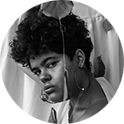
Isabela Alves - AfroBela | Brazil |
Isabela Alves: A multi-artist and futurist, Alves resides in the neighborhood of Jd. Joao XXIII, and it is in this territory that she creates and develops her languages, working with digital collage, canvas and acrylic paint, photography, and the written word. Her projects involve people discussing the themes of sexuality and identity, her best known work being the platform A Perfeita Queda dos Búzios, (“The Perfect Falling of the Cards”), co-created with Jessica Ferreira, a resident at the Teatro de Conteiner.

Ione Maria | Brazil |
Ione Maria: 25 years old, straight out of Vila Albertina, São Paulo. Maria has worked with collages for the last five years, and also works with design and art direction. The collage, as evidence of Afro-Brazilian culture through an analogue/manual format, is her field of research. Her art comes from a place of situating Black narratives in spaces worthy of royalty through the images that surround them. She also creates art with friends and family members, sewing firmer and more nurturing relationships through her work. In design, she focuses on the language of Afro-futurism, articulated through the Black independent movement, for artistic and communicative ends.



